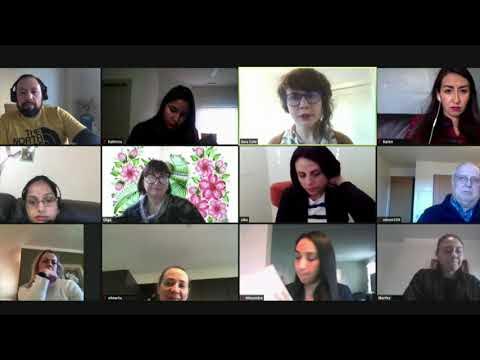How to Teach Vocabulary in Grades K-2 | Vocabulary Activities for Kids
Summary
TLDRIn this video, Susan Jones, a former K-2 literacy teacher, shares effective vocabulary instruction strategies for young learners. She emphasizes the importance of building both breadth (how many words students know) and depth (how well they understand those words). Key tips include purposefully selecting words, creating semantic networks, and using engaging activities like 'Leave it Out' and 'Shades of Meaning' to help students deepen their vocabulary knowledge. These strategies not only enhance students' vocabulary but also improve their reading comprehension and phonemic awareness in later grades.
Takeaways
- 😀 Early vocabulary development in kindergarten through second grade is linked to higher reading comprehension and academic achievement later in life.
- 😀 Students acquire vocabulary at a pace of 3,000 to 4,000 words per year, mainly through exposure to conversations, reading, and media.
- 😀 Vocabulary instruction should focus on both breadth (number of words learned) and depth (understanding and usage of words).
- 😀 Teachers should purposefully choose words that have easy synonyms to teach, such as 'assist' and 'help,' allowing students to hear and use them in various contexts.
- 😀 The 'Leave It Out' activity encourages students to compare and contrast words, helping them identify connections and distinctions between related concepts.
- 😀 Semantic networks should be developed by exposing students to words in various contexts and experiences, which deepen their understanding of words.
- 😀 The 'Word Gradient' activity helps students distinguish shades of meaning among similar words by ranking them based on intensity, such as verbs like 'look' and 'glare.'
- 😀 Multiple Meaning Triangle Match-ups help students understand words with multiple meanings, broadening their semantic maps by connecting different definitions (e.g., 'bark' as both a dog sound and tree covering).
- 😀 Vocabulary activities should encourage student discussions, as these conversations reveal how students process and understand words.
- 😀 Effective vocabulary instruction can be a fun and engaging way to increase students' comprehension skills while improving their ability to listen and read.
Q & A
Why is vocabulary development important in early grades (K-2)?
-Vocabulary development in early grades is crucial because it directly influences later reading comprehension and academic achievement. Research shows that students with a larger vocabulary tend to have better reading scores, phonemic awareness, and overall academic success in later grades.
What is the difference between vocabulary breadth and vocabulary depth?
-Vocabulary breadth refers to the number of words a student knows, while vocabulary depth refers to how well they understand and can use those words. Both aspects are important for a well-rounded language development.
What is the first tip for effective vocabulary instruction in K-2 classrooms?
-The first tip is to choose words purposefully. Teachers should select words that are meaningful, have easy synonyms, and can be frequently used in different contexts to help students grasp both the meaning and usage of these words.
How can teachers help students acquire new vocabulary if it's impossible to explicitly teach thousands of words per year?
-Teachers can help students acquire vocabulary by using rich language in everyday conversations, readings, and activities. Students naturally pick up new words by hearing them in context, so teachers should model vocabulary usage and reinforce words through repeated exposure.
What role does word context play in vocabulary development?
-Context is vital in helping students understand the meaning of words. When students hear or see a word used in various contexts (e.g., in books, conversations, or activities), they can better grasp the word's meaning and its proper use in different situations.
What is the purpose of the 'Leave It Out' activity in vocabulary instruction?
-'Leave It Out' is an activity that helps students think critically about the relationships between words. By determining which word is least like the others in a set, students practice categorizing words and discussing their meanings, enhancing their vocabulary understanding.
How does the 'Shades of Meaning' activity help deepen students' understanding of vocabulary?
-The 'Shades of Meaning' activity helps students explore the subtle differences in the intensity or meaning of similar words. For example, by ranking verbs like 'look', 'stare', and 'glare', students learn how these words differ in their intensity and context, deepening their semantic understanding.
What is the benefit of teaching multiple meanings of a word?
-Teaching multiple meanings of a word helps expand students' vocabulary by showing them that words can have different meanings depending on the context. This enhances their ability to understand and use words in varied situations, as seen in activities like the 'Multiple Meaning Triangle Match-ups'.
How do conversations among students enhance vocabulary development during activities?
-Conversations allow students to verbalize their thinking and reasoning, which helps them process and solidify their understanding of words. These discussions provide valuable insights into how students are connecting words and their meanings, allowing teachers to assess comprehension.
What are some of the activities mentioned that support vocabulary development in the K-2 classroom?
-Some activities mentioned include 'Leave It Out', where students compare words and explain their differences, 'Shades of Meaning', where students order words based on intensity, and 'Multiple Meaning Triangle Match-ups', where students explore words with different meanings in various contexts.
Outlines

Cette section est réservée aux utilisateurs payants. Améliorez votre compte pour accéder à cette section.
Améliorer maintenantMindmap

Cette section est réservée aux utilisateurs payants. Améliorez votre compte pour accéder à cette section.
Améliorer maintenantKeywords

Cette section est réservée aux utilisateurs payants. Améliorez votre compte pour accéder à cette section.
Améliorer maintenantHighlights

Cette section est réservée aux utilisateurs payants. Améliorez votre compte pour accéder à cette section.
Améliorer maintenantTranscripts

Cette section est réservée aux utilisateurs payants. Améliorez votre compte pour accéder à cette section.
Améliorer maintenant5.0 / 5 (0 votes)






